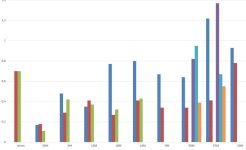An1cca
Rising Star
Hello guys,
Before taking a break from psychedelic research, I wanted to post my notes concerning a promising technique of cactus analysis. I also added some notes on ethanolic extraction and purification.
As it was too much to post, I've put it all into an illustrated document. But don't worry, I gave it a Nexus-look&feel 8)
May it spark further research!
Before taking a break from psychedelic research, I wanted to post my notes concerning a promising technique of cactus analysis. I also added some notes on ethanolic extraction and purification.
As it was too much to post, I've put it all into an illustrated document. But don't worry, I gave it a Nexus-look&feel 8)
May it spark further research!

